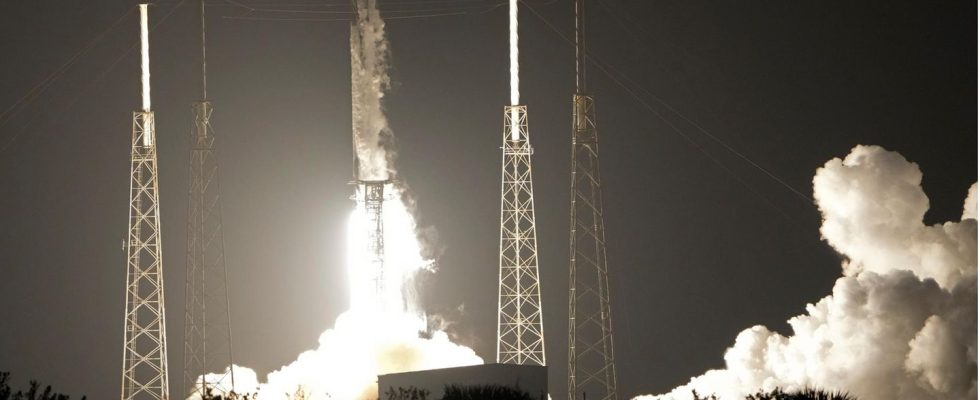Lunar Lander “Hakuto-R”
Private Japanese moon mission may have failed: lost contact with the probe
A Falcon 9 rocket from the US space company SpaceX brought “Hakuto-R” to the moon
© John Raoux/AP/DPA
It should have been a moment of jubilation, but after the landing time for the Japanese lunar lander, there was helplessness and concern. Initially, no communication was possible with “Hakuto-R”.
The Japanese company ispace was initially unable to report the success of the planned first private moon landing on Tuesday evening. For the time being, it was no longer possible to establish communication with the “Hakuto-R” moon lander, ispace said about half an hour after the time of landing. It was initially unclear whether the “Hakuto-R” touched down largely intact or suffered serious damage. So far, only government programs could have successfully landed on the moon. Other private moon missions had previously failed.
“Hakuto-R” was supposed to bring cargo to the moon
The lander, 2.3 meters high and 2.6 meters wide with the landing legs extended, had carried international cargo to the moon, including a small United Arab Emirates rover and an even smaller two-wheeled robot. It was developed by the Japanese state space agency Jaxa and the Japanese toy manufacturer Tomy. Two American competitors, Astrobotic and Intuitive Machines, are also planning moon missions in the near future.
living in isolation
Our editor was on a moon mission for 14 days – in Poland
Takeshi Hakamada, founder and boss of ispace, had announced before the landing “the beginning of a new era of commercial lunar missions”. But a moon landing is not trivial: the moon is littered with debris from missions that didn’t make it. These include the “Beresheet” probe of the Israeli non-profit organization Space IL, which crashed on the surface in 2019 due to a failed engine. Only the USA, the Soviet Union and China have successfully landed and operated spacecraft on the moon.
Private companies have also wanted to land on the moon and take on other space projects for years. So far, US companies such as SpaceX have been particularly involved. The competition is also now in the starting blocks, and there are plans for further missions to the moon by private companies before the end of this year. “We are opening access to the moon for the progress of mankind,” advertises the US company Intuitive Machines. The moon flight of his lander “Nova-C” is currently planned for June, but has already been postponed several times. Among other things, the lander is to collect data for NASA’s “Artemis” mission on the moon.
The US company Astrobotic Technology from Pittsburgh may want to launch its “Peregrine Lander” in May. This start has also been postponed several times. Among other things, the lander is to bring materials for experiments to the moon on behalf of NASA.
As with the ISS space station, the US space agency Nasa is also working more and more closely with commercial providers on moon projects because this has proven to be an efficient and ultimately cost-saving way. Conversely, the business model of private companies has so far often depended on government clients.
The USA also want to fly to the moon again – with people
ispace also has contracts with Nasa and Jaxa. The goal is to collect data from the moon for the development of future moon missions, said the project team at Jaxa. In the run-up to the attempted landing, the ispace private mission was “the quickest means of achieving our goal.”
The Atlas crater chosen as the landing site is on the south-eastern edge of the Mare Frigoris (“Sea of Cold”). A rocket from the US space company SpaceX launched “Hakuto-R” in December. Hakuto means “white rabbit” in Japanese – in Japanese mythology, he lived on the moon. The “R” stands for English reboot, restart.
Orbital exploration began in the 1950s during the Cold War as heated competition between the United States and the former Soviet Union. The Soviets landed an unmanned probe on the lunar surface in 1959. Ten years later, the USA succeeded in the first manned mission with “Apollo 11”. Two years ago, China sent a capsule to the moon and retrieved rock samples. In the course of the “Artemis” project of the USA, people should soon fly to the moon again.


